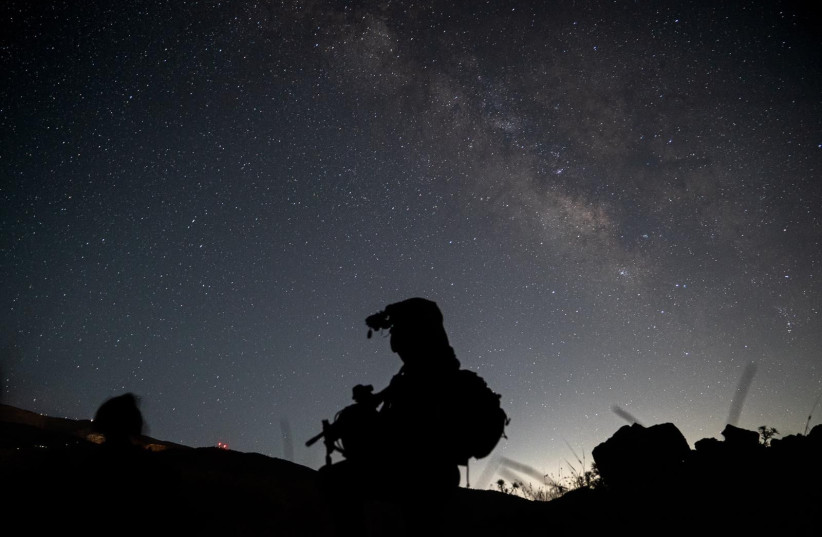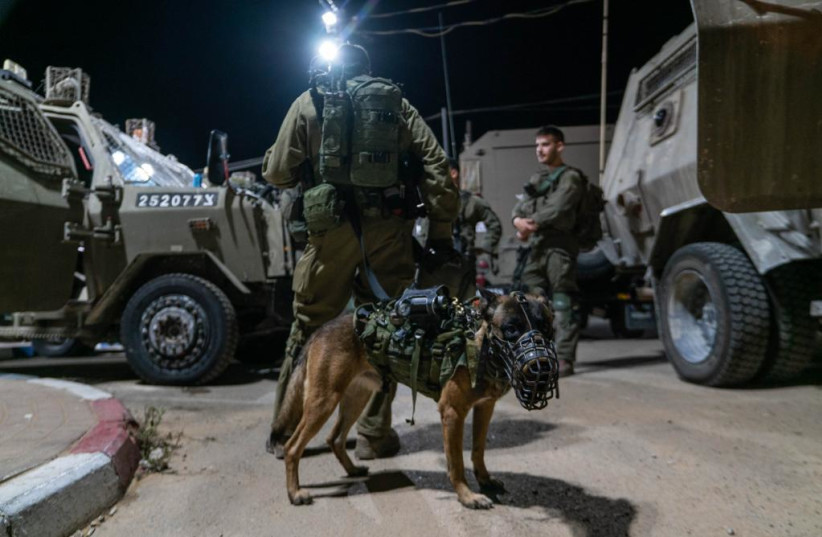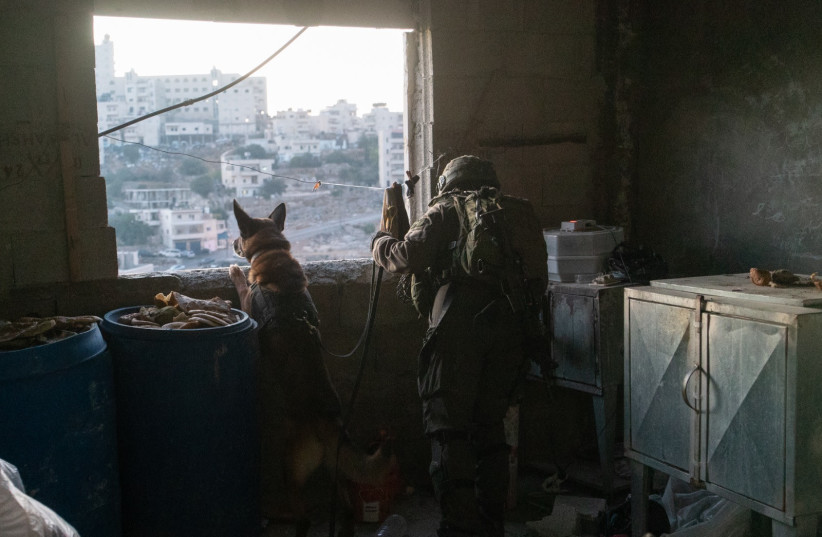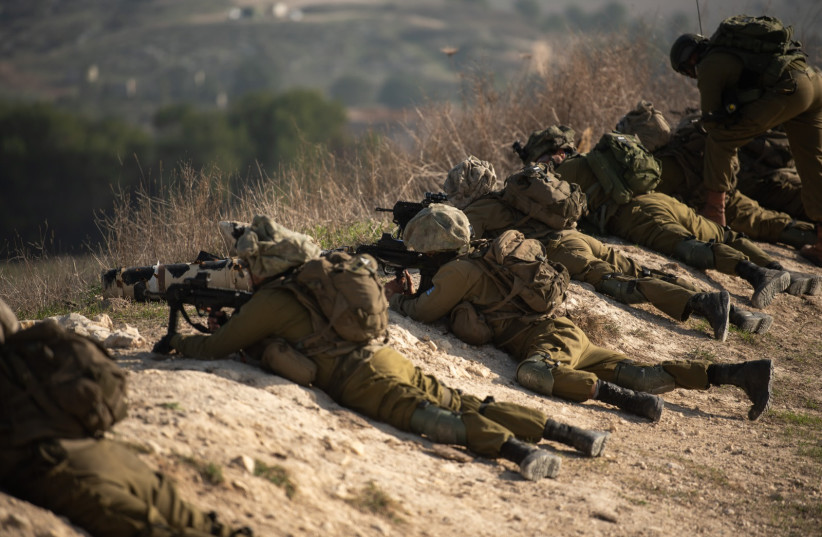by Yonah Jeremy Bob
There were 53 military visits to Abraham Accords countries in 2022.
 |
IDF training exercises 2022.
(photo credit: IDF SPOKESPERSON'S UNIT)
|
The IDF on Thursday put out a 2022 year-end report which painted a mixed picture of the Israeli security situation, with stability currently vis-à-vis Gaza, but significant turmoil regarding the West Bank.
Besides those arenas, the report did not give exact statistics regarding Israeli air force attacks on Iranian weapons and militias in Syria and other nearby countries but did give general statistics about air force flight hours, which along with other statements by top IDF officials showed significant activity.
IDF activity by the numbers
Regarding terror emanating mostly from the West Bank, the report said that 2022 saw 7,589 rock throwing incidents - up from 5,532 in 2021, 4,002 in 2020 and 3,805 in 2019.
There were also 1,268 molotov cocktail incidents, up from 1,022 in 2021, 751 in 2020 and 839 in 2019.
Most worrying were the 285 shooting incidents, up from 61 in 2021, 31 in 2020 and 19 in 2019.
The number of stabbing incidents stayed relatively similar between 9 and 18, as it has been for the last four years.
This picture showed that violence from the West Bank has escalated in 2022 not only at the low-grade mass protest-riot level, but also using deadly weapons.

Those deadly weapons led to the deaths of 31 Israelis, a majority being civilians, compared to just 5, 3 and 4 in 2019, 2020, and 2021 respectively.
The report said that the amount of confiscated terror funds was larger than in 2019-2020, but less than in 2021, while the amount of confiscated weapons was more than in 2021, but less than in 2019 and 2020.
According to the report, the number of Palestinians under arrest at the end of 2022 was 2,672, a slight increase from prior years.
Breakdown of Palestinian arrests
Breaking down the arrests of Palestinians by month, the high for the year was 411 in March, which was the start of the ongoing series of waves of terror of 2022, with 336 in August, in parallel to Operation Breaking Dawn with Gaza, but down to the 200s in recent months and down to 170 in December.
To the extent the 2022 waves of terror, or at least West Bank border infiltrations have been reduced, some of that could be as a result of ongoing progress toward 50 kilometers of new sensors to the West Bank Wall being installed, with a completion target date of the end of 2023.
Another 50 kilometers of other adjustments to the border fence are also planned, but without a definitive end date given.
An additional four kilometers of more significant security measures surrounding the West Bank Wall were completed in the Northern West Bank.
All of this included spending NIS 30 million out of an eventual NIS 50 million budgeted toward the task of improving the West Bank border security.
Recent IDF and Shin Bet reports described a reduction in attacks in November, but there have been other ups and downs in 2022, so it was unclear whether the terror waves have truly returned to more stable pre-2022 levels, or whether this was just a temporary lull.
Operation Breaking Dawn
Referring to Operation Breaking Dawn, the IDF report tried to present the last four months of relative quiet from Gaza as evidence that the August conflict deterred Gaza terrorists even more than prior operations.
However, this was a somewhat bizarre statistic, as most Israelis are not looking for quiet only over a period of several months, but for at least several years, or more, such as the 16-year period of relative quiet with Hezbollah in Lebanon.

In terms of the operation itself, the report said that 50 Islamic Jihad fighters were killed, there was a 97% success rate for iron dome accuracy shooting down Gaza rockets, 180 Gaza targets were destroyed and 1,162 rockets were fired from Gaza.
Although some of these numbers sound impressive, the fact is that the vast majority of Islamic Jihad’s forces and rocket arsenal remain intact and Hamas has not lost any forces and has been able to restock its weapons arsenal since the May 2021 Gaza war.
Next, the report detailed the IDF’s activities stopping smuggling across the border, with an emphasis on the Southern border with Sinai. 500 border incidents were disrupted, and 75 were thwarted out of 160 full-fledged smuggling incidents.
The mix of the three categories appeared to indicate that some incidents might just be illegal border crossings of smugglers without items and some might include preventing an illegal crossing, but without actually catching anyone, whereas around 75 incidents involved catching smugglers with their smuggled items.
A broad view of the Middle East
In the broader Middle East arena, there were a stunning 53 visits of IDF officials to Abraham Accords countries, including the formation of a new unit to focus on those activities.
The “war between wars” of Israeli airstrikes and other special operations in Syria and other nearby countries was likely responsible for most of the 105,000 hours of Israeli air force airtime.
The air force also participated in 16 international joint drills with allies.

In a speech on Tuesday, outgoing IDF chief-of-staff Lt. gen. Aviv Kohavi made reference to nearly constant activity in Syria and against Iran generally. He and other officials have discussed hundreds and sometimes thousands of attacks over a 10-year period dating back to 2012.
The report said that naval vessels had spent around 96,686 hours at sea, including using the Barak interceptor defense system twice as well as participating in 14 international joint drills.
Miscellaneous statistics
There were some other interesting statistics in the report. This year saw the training and appointing of 5,953 new officers.
7,000 IDF reservists participated in Operation Breaking Dawn.
According to the report, 130 cafeterias were upgraded, 900 IDF graduates went into hi-tech through a special program facilitating that transition and salaries were raised for soldiers from NIS 823/month to NIS 1,235/month for non-combatants and from NIS 2,032 to NIS 3,048/month for elite combatants.
The report also referenced an expansion in choice for female soldiers’ uniform options, including some uniforms with pockets, as well as some smaller and more comfortable boot options.
Yonah Jeremy Bob
Source: https://www.jpost.com/israel-news/article-726088
No comments:
Post a Comment